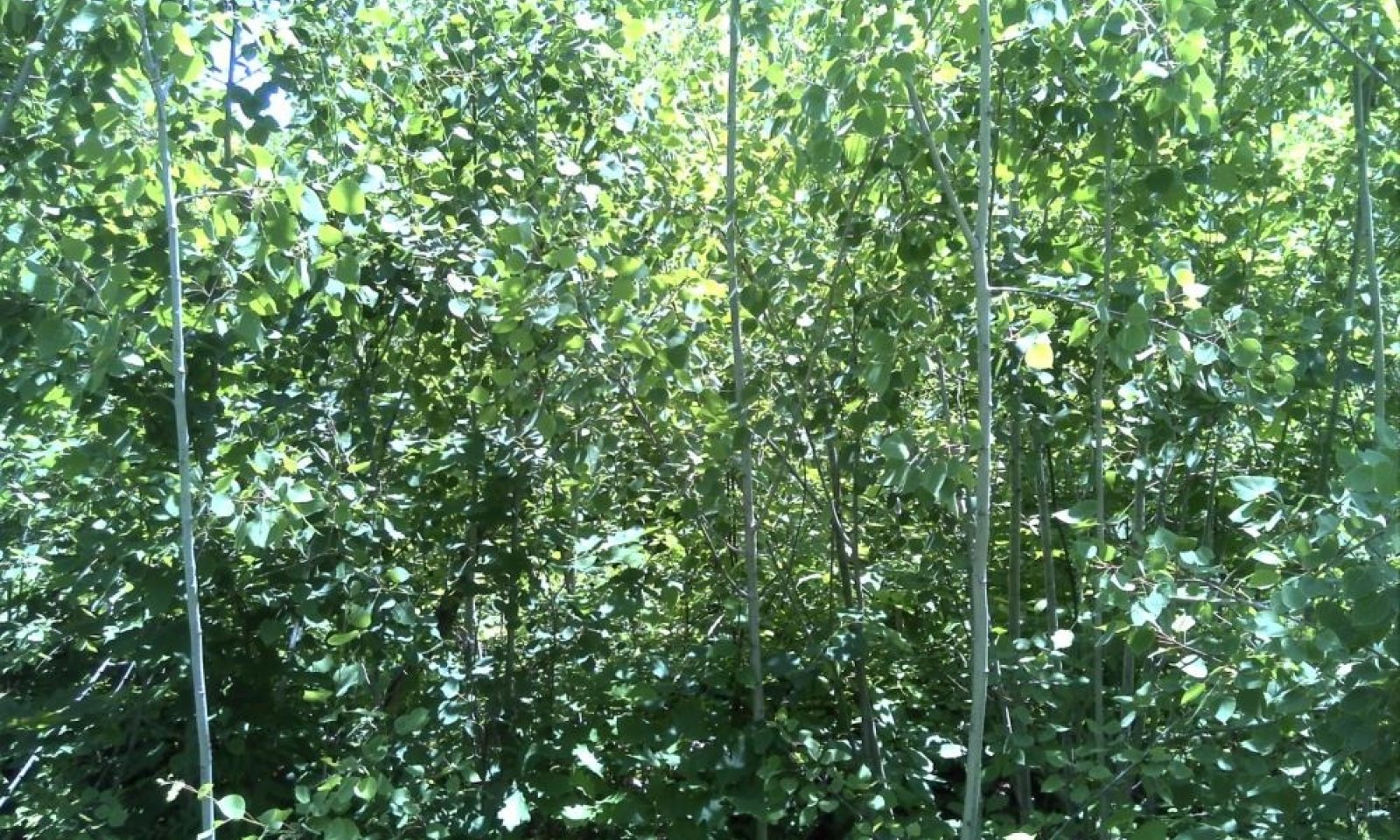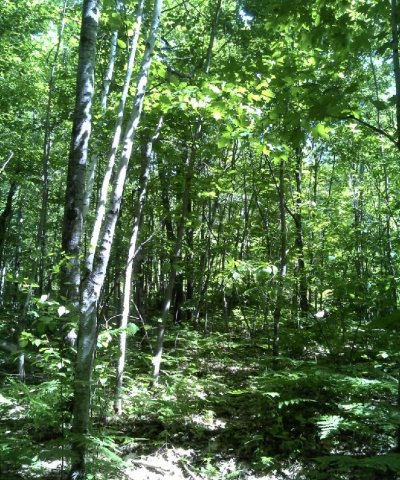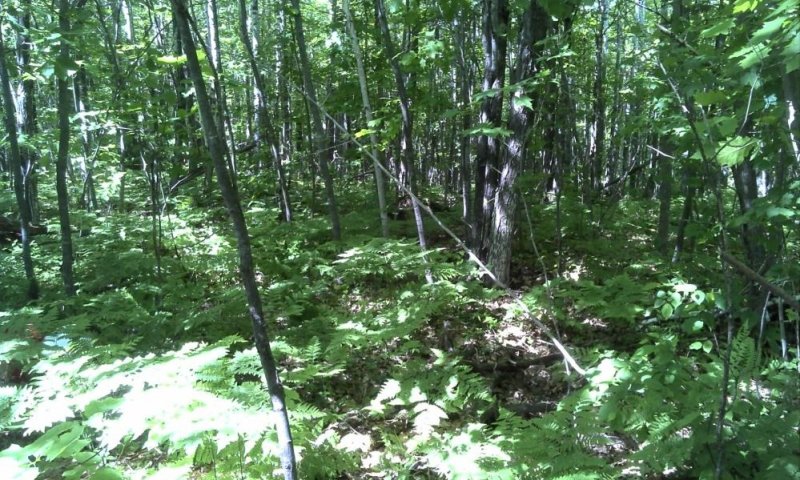

Natural Resources
Conservation Service
Ecological site R092XY013WI
Sandy Uplands
Last updated: 4/09/2020
Accessed: 12/19/2025
General information
Provisional. A provisional ecological site description has undergone quality control and quality assurance review. It contains a working state and transition model and enough information to identify the ecological site.
MLRA notes
Major Land Resource Area (MLRA): 092X–Superior Lake Plain
The Wisconsin portion of the Superior Lake Plain (MLRA 92) corresponds very closely to the Superior Coastal Plain Ecological Landscape published by Wisconsin Department of Natural Resources (WDNR 2015). The following brief overview of this MLRA is borrowed from that publication.
The Superior Coastal Plain is bordered on the north by Lake Superior and on the south by the Northwest Sands, Northwest Lowlands, and North Central Forest Ecological Landscapes. The total land area is approximately 1.2 million acres, which mostly consists of privately-owned forestland. The climate is strongly influenced by Lake Superior, resulting in cooler summers, warmer winters, and greater precipitation compared to more inland locations. The most extensive landform in this ecological landscape is a nearly level plain of lacustrine clays that slopes gently northward toward Lake Superior. The coastal plain is cut by deeply incised stream drainages and interrupted by the comparatively rugged Bayfield Peninsula.
During the Late Wisconsin glacial period, this area was covered with the advancing and retreating lobes of Superior and Chippewa. The landscape was rippled with moraines, but they were subdued by deposition of lacustrine materials. As the glaciers receded, glacial lakes riddled the landscape—most notably, Glacial Lake Duluth. The glacier receded eastward, exposing the western Lake Superior Basin. The ice covered the eastern basin, blocking the outlet of the lake, and continued to recede and contribute meltwaters that filled the glacial lake. The deep, red clays were deposited during this period of glacial lakes. The meltwaters from the glacier also contained sands which were deposited along the edge of the glacial lakes as beach deposits. Deep, narrow valleys have since been carved by rivers and streams flowing north into Lake Superior.
Historically, the Superior Coastal Plain was almost entirely forested. Various mixtures of eastern white pine (Pinus strobus), white spruce (Picea glauca), balsam fir (Abies balsamea), white birch (Betula papyrifera), balsam poplar (Populus balsamifera), quaking aspen (Populus tremuloides), and northern white-cedar (Thuja occidentalis) occurred on the fine-textured glacio-lacustrine deposits bordering much of the Lake Superior coast. Sandy soils, sometimes interlayered with clays, occur in some places. Such areas supported forests dominated by eastern white pine and red pine (Pinus resinosa). Eastern white pine was strongly dominant in some areas, according to mid-19th century notes left by surveyors of the federal General Land Office (Finley, R. 1976). Dry-mesic to wet-mesic northern hardwoods or hemlock-hardwood forests were prevalent on the glacial tills of the Bayfield Peninsula. Large peatlands occurred along the Lake Superior shoreline, associated with drowned river mouths.
Classification relationships
Habitat Types of N. Wisconsin (Kotar, 2002): Six sites in this ES key out to Pinus strobus – Acer rubrum / Vaccinium angustifolium – Aralia nudicaulis – Polygonatum pubescens variant [PArVAa-Po] and seven sites in this ES key out to Acer saccharum – Tsuga canadensis / Maianthemum canadensis [ATM].
Biophysical Setting (Landfire, 2014): This is ES is mapped as Larentian – Acadian Northern Hardwoods Forest and Larentian – Acadian Northern Hardwoods Forest – Hemlock. This ES is better represented by the Nothern Hardwoods Forest without the Hemlock aspect.
WDNR Natural Communities (WDNR, 2015): This ES is most similar to Northern Dry-mesic Forest.
USFS Subregions: Superior-Ashland Clay Plain Subsection (212Ya); May contain small areas of Ewen Dissected Lake Plain Subsection (212Jo), Winegar Moraines Subsection (212Jc), Gogebic-Penokee Iron Range Subsection (212Jb), and NorthShore Highlands Subsection (212Lb)*
*Located in Upper Peninsula of Michigan (212J) and Minnesota (212Lb)
Major Land Resource Area (MLRA): Superior Lake Plain (92)
Ecological site concept
Sandy Uplands has a large extent in the Bayfield peninsula of MLRA 92. This site occurs on plains, terraces, knolls, ridges, hillslopes, interfluves, post glacial dunes, and ravines and eskers located on outwash plains, lake plains, and till plains. Landform shape can be linear, convex, or concave. These sites were formed primarily in sandy outwash, beach deposits, or sandy eolian deposits and may be underlain by finer glaciofluvial or till substrates. The underlying deposits typically occur at a depth below 100 cm. Bedrock is typically deeper than 200 cm (a very small portion of sites have igneous/metamorphic bedrock as shallow as 50 cm). Soils are moderately well to excessively drained. Sites with underlying finer material may have a seasonally high or perched water table beginning at a depth of 61 cm, but may drop below 200 cm during dry periods. The soil does not stay saturated for extended lengths of time, making it distinct from the Moist Sandy Lowlands and the Wet Sandy Depressions. Soil moisture regime can be characterized as dry to dry-mesic and nutrient regime poor to medium. Water is primarily received through precipitation. Soils range from strongly acid to neutral, and carbonates may be present on some sites beginning at 109 cm.
Historically this Ecological Site was occupied by forest communities dominated by various mixtures of pine and oak species. The mixtures were largely dependent on frequency and severity of disturbances, particularly fire and subsequent seed-bed conditions and availability of seed sources. White pine was the most persistent species in forest communities due to its ecological characteristics of great longevity, resistance of old trees to fire damage and moderate tolerance to shade by seedlings and saplings. Red oak was often present as an associate species. Virtually all stands on this Ecological Site were harvested during the late 19th and early 20th centuries and post-logging fires were almost universal. Today’s forests are dominated by any mixture of white pine, red pine, aspen, red oak and red maple. White birch, balsam fir and white spruce are common associates. Frequent ground flora includes bracken fern, hazelnuts, grasses, large-leaved aster, partridge berry, Canada mayflower, and wild sarsaparilla.
The deep solum with some finer materials makes this ES different from Sandy Sandstone Uplands (sandstone bedrock within 200 cm). Sandy Uplands differs from Loamy Uplands and Clayey Uplands based on soil texture and parent materials (coarser). Wet Sandy Lowlands and Moist Sandy Lowlands occur in lower slope positions on the landscape and are somewhat poorly to very poorly drained.
Associated sites
| R092XY006WI |
Wet Sandy Lowlands Wet Sandy Depressions are poorly or very poorly drained sandy soils that have formed in outwash and lake plains. The sites are seasonally ponded depressions that remain saturated for sustained periods, allowing for hydric conditions to occur. Primarily associated with Kinross soil series. HGM criteria: recharge; Depressional. These sites are often adjacent to Sandy Uplands, but located on a lower landscape position in the drainage sequence. |
|---|---|
| R092XY010WI |
Moist Sandy Lowlands Moist Sandy Flats have a sandy mantle overlying finer glaciofluvial materials. The finer materials can cause episaturation in spring and fall, allowing the site to remain moist for some of the growing season, but does not remain saturated, nor does it have hydric conditions. These sites are often adjacent to Sandy Uplands, but located on a lower landscape position in the drainage sequence. |
Similar sites
| R092XY008WI |
Sandy Sandstone Uplands These sites are shallow sandy soils that overly sandstone bluffs along the shore of Lake Superior. They are excessively drained, do not remain saturated any time of the year, and are strongly acidic. These sites differ from Sandy Uplands with a truncated soil and excessive drainage. |
|---|---|
| R092XY014WI |
Loamy Uplands These sites are deep, moderately well to well drained loamy soils. They formed in loamy and silty till, glaciolacustrine, or glaciofluvial deposits. Some sites have a sandy mantle. Many sites have a seasonally high water table, but does not remain saturated for the growing season. Soils range from strongly acid to strongly alkaline, and some sites have carbonates present. These sites are found in a similar landscape as Sandy Uplands, but are finer textured and in a different drainage sequence. |
| R092XY015WI |
Clayey Uplands These sites are deep, moderately well to well drained soils that formed in clayey till or glaciolacustrine deposits. Some sites have a sandy or loamy mantle. Sites have a seasonally high water table, but does not remain saturated for extended periods. Sites range from strongly acid to moderately alkaline, with carbonates present in many sites. These sites are found in a similar landscape as Sandy Uplands, but are finer textured and in a different drainage sequence. |
Table 1. Dominant plant species
| Tree |
(1) Pinus strobus |
|---|---|
| Shrub |
(1) Corylus cornuta |
| Herbaceous |
(1) Corylus cornuta |
Click on box and path labels to scroll to the respective text.
Ecosystem states
| T1A | - | Stand replacing disturbance e.e. blow-down ad fire, or clear-cutting, folowed by fire. Regeneration by natural seeding or planting. |
|---|---|---|
| R2A | - | Fire control, time, natural succession. |
| T2A | - | Grazing by livestock. Disruption of tree regeneration and ground vegetation. |
| T2B | - | Removal of natural vegetation, plowing, fertilizing, irrigating, planting agricultural crops. |
| T3B | - | Removing livestock from stands. |
| T3A | - | Removal of natural vegetation, plowing, fertilizing, irrigating, planting agricultural crops. |
| T4A | - | Cessation of agricultural crop cultivation, replanting trees. |
State 1 submodel, plant communities
| 1.1A | - | Light to moderate intensity fires, reducing, or eliminating fire sensitive species such as red maple, balsam fir, and white spruce. |
|---|---|---|
| 1.2A | - | Time, natural succession. |
State 2 submodel, plant communities
Communities 1, 5 and 2 (additional pathways)
| 2.1A | - | White pine regeneration in mixed stand of white, red, and sometimes Jack pine. |
|---|---|---|
| 2.2A | - | White pine seeding in from natural seed source, or under-planted |
| 2.3A | - | White pine seeding in from natural seed source, or under-planted. |
| 2.4A | - | White pine seeding in from natural seed source, or under-planted. |


